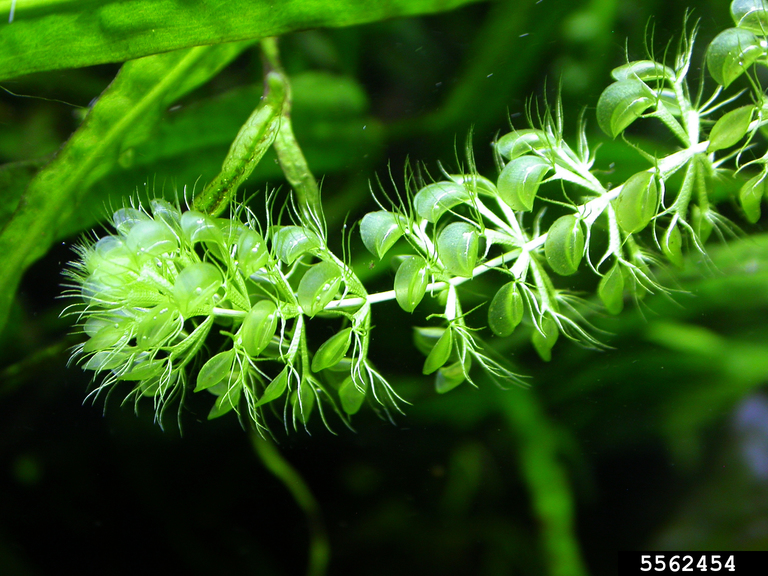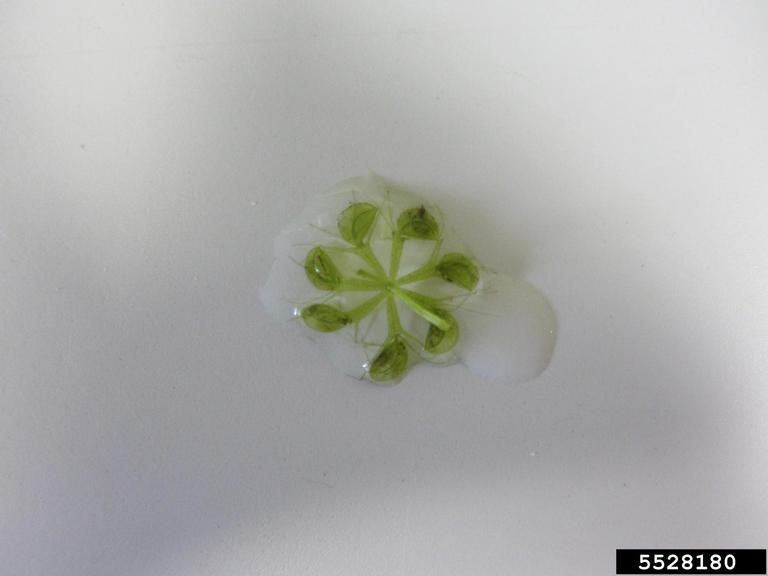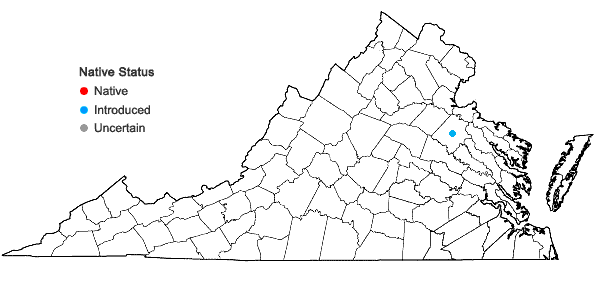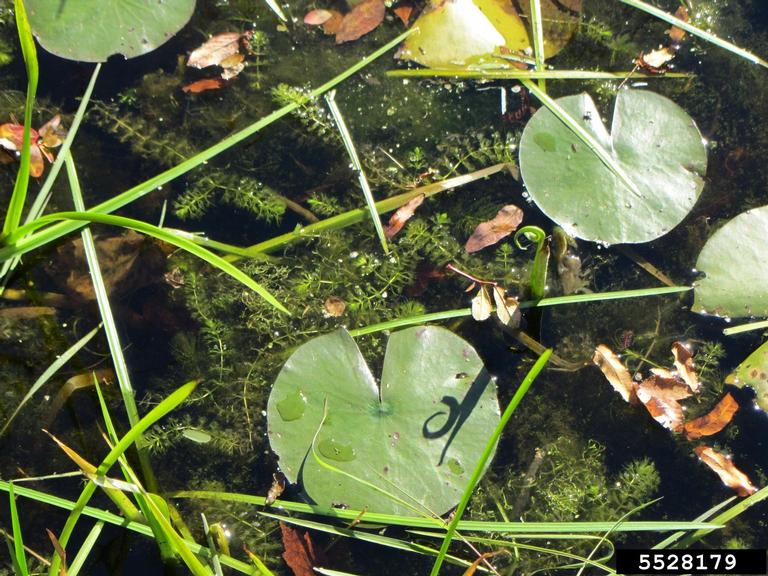
Early Detection Invasive Plant Species of Virginia
Waterwheel Plant
(Aldrovanda vesiculosa)
What's the harm?
Through vegetative reproduction, waterwheel plan has bee reported as rapidly forming large populations that may compete with rare native plants such as bladderwort (Utricularia ssp.). When it forms a dense layer on the surface of ponds and slow streams, waterwheel plants may interfere with other native species and disrupt the rare natural communities where it has been found to be proliferating.

Where's it from?
Waterwheel had a wide yet sparse distribution across parts of Europe, Africa, Asia, and Australia. Populations in its natural range are rapidly declining, prompting recognition as an endangered species in these places.
How did it get here?
It was first officially documented in Virginia in 2013 at Fort A.P. Hill Military Reservation in Caroline County, where it appears to have escaped from nearby cultivation to establish in a large, old impoundment on the base. It has since been discovered in several other streams and ponds at the Fort. Unverified reports tell of occurrences of waterwheel in other Virginia counties. Other naturalized populations in North America are reported in New Jersey and New York.

Where is it now?
Since its discovery in rare wetland habitats in Caroline County, waterwheel has not been documented outside Ft. A.P. Hill. From 2018 to 2020, DCR conducted surveys outside of Fort A.P. Hill and found no new populations. At this time, waterwheel appears to be limited to the rare low-nutrient aquatic habitat found on the base.

What's being done?
Resource managers are monitoring waterwheel's known locations. Field surveys were conducted in waterways downstream from the known infestations, but no new populations were found.

How do I report a sighting of these species?
DCR is interested in any information about waterwheel sightings. You can choose from several ways to report sightings of an invasive species, described here >>.
How can I learn more?
Image/Illustration Credits
Figure 1. Waterwheel (Aldrovanda vesiculosa). Photo by Shaun Winterton, CA Department of Food and Agriculture, Bugwood.org
Figure 2. Waterwheel whorl of radial leaves bearing traps. Photo by Chris Doyle, Allied Biological, Bugwood.org.
Figure 3. Waterwheel infestation. Photo by Chris Doyle, Allied Biological, Bugwood.org
 Virginia Invasive Species
Virginia Invasive Species